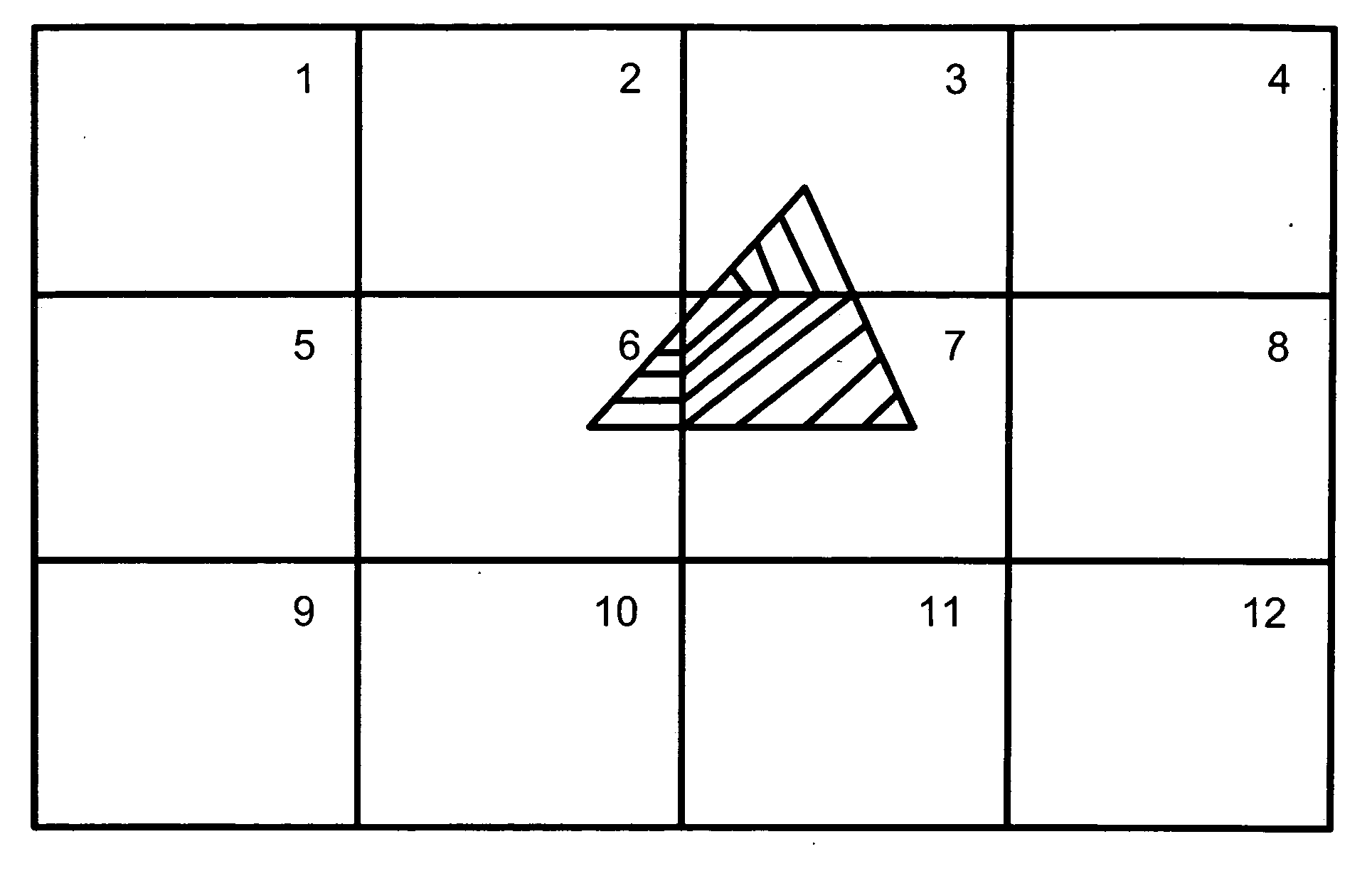Compositing images using logically divided object space
a logically divided object space and image technology, applied in the field of graphic processing, can solve the problems of increasing processing time, requiring the transmission and/or processing of depth data for all rendered objects, and many graphical applications, such as real-time display applications, cannot tolerate such inefficiencies
- Summary
- Abstract
- Description
- Claims
- Application Information
AI Technical Summary
Benefits of technology
Problems solved by technology
Method used
Image
Examples
Embodiment Construction
[0017] Illustrative embodiments of the invention eliminate the need for depth data when compositing portions of a single, distributively rendered scene. To that end, various embodiments divide the object space into multiple portions that each may contain object data of a scene having one or more objects. The object data in each of the object space portions then are distributed to multiple rendering devices for rendering. When merging the rendered object data (i.e., image data) to produce the final image, rather than use depth data, a compositor simply uses the positional priority of each object space portion to determine which objects (or portions of objects) are in the foreground of the image. By using the positional priority information in this manner, the compositor can merge the image data without executing computationally intensive pixel by pixel data analyses of the image. Details of illustrative embodiments are discussed below.
[0018]FIG. 1 schematically shows a hard-wired, d...
PUM
 Login to View More
Login to View More Abstract
Description
Claims
Application Information
 Login to View More
Login to View More - R&D
- Intellectual Property
- Life Sciences
- Materials
- Tech Scout
- Unparalleled Data Quality
- Higher Quality Content
- 60% Fewer Hallucinations
Browse by: Latest US Patents, China's latest patents, Technical Efficacy Thesaurus, Application Domain, Technology Topic, Popular Technical Reports.
© 2025 PatSnap. All rights reserved.Legal|Privacy policy|Modern Slavery Act Transparency Statement|Sitemap|About US| Contact US: help@patsnap.com



